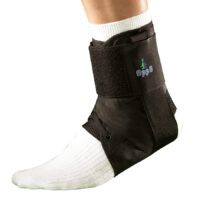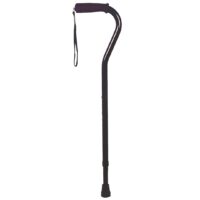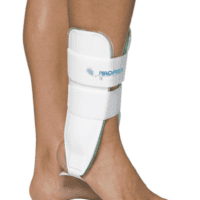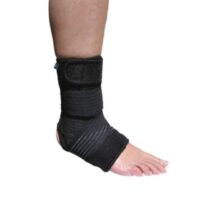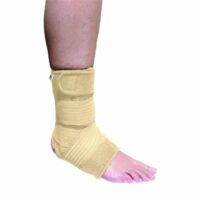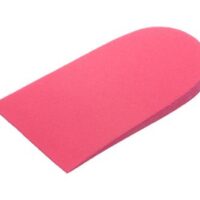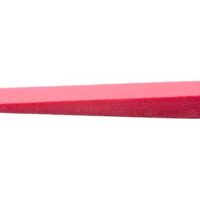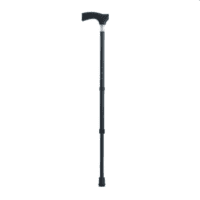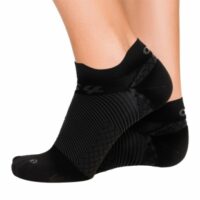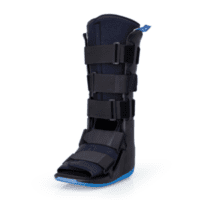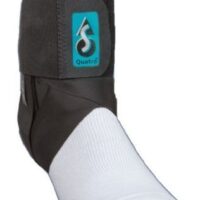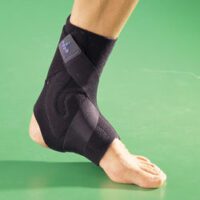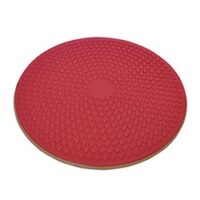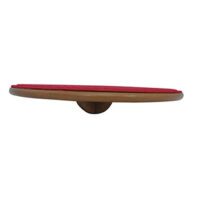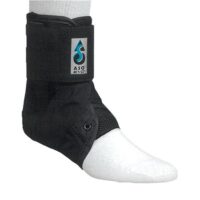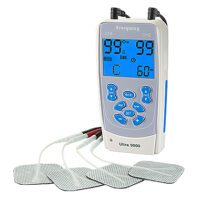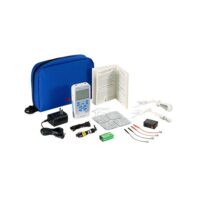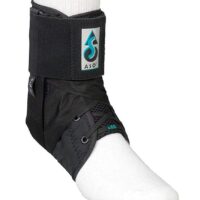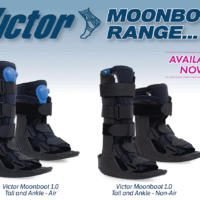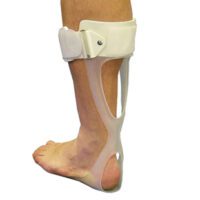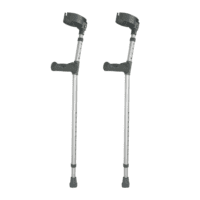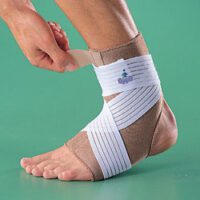Syndesmosis Injury
Article by John Miller

Syndesmosis Injury
A Comprehensive Guide to Treatment and Recovery
Introduction
Syndesmosis injuries, commonly known as high ankle sprains, involve the syndesmotic ligaments connecting the tibia and fibula. These injuries are complex and require a nuanced approach to treatment and recovery. This guide offers an in-depth look at the role of physiotherapy and surgeons in managing these injuries, including both non-surgical and surgical options.
Understanding Syndesmosis Injuries
These injuries typically occur from twisting movements or ankle pressure. They’re more severe than standard ankle sprains and require a specific treatment approach. Athletes, especially in contact sports, are at a higher risk.

Symptoms and Diagnosis
Syndesmosis injuries, characterised by damage to the ligaments connecting the tibia and fibula, present distinct symptoms that set them apart from regular ankle sprains. Understanding these symptoms is key to early and accurate diagnosis, which is crucial for effective treatment.
Symptoms of a Syndesmosis Injury
The primary indicators of a syndesmosis injury include:
- Pain: This is often concentrated above the ankle, specifically in the area between the tibia and fibula. The pain can range from sharp during specific movements to a constant dull ache.
- Swelling: Unlike typical ankle sprains, swelling from a syndesmosis injury often extends upwards along the leg, rather than being confined to the ankle.
- Instability: The ankle may feel unstable or weak, making it difficult to perform regular activities.
- Weight-Bearing Difficulty: One of the most telling signs is the inability to bear weight on the affected leg. This symptom is less common in standard ankle sprains and points towards a more severe syndesmosis injury.
Diagnosis of a Syndesmosis Injury
Accurately diagnosing a syndesmosis injury involves a combination of clinical assessment and imaging:
- Clinical Assessment: Physiotherapists or healthcare professionals will conduct a thorough physical examination. They will look for specific points of tenderness and assess the range of motion, stability, and strength of the ankle.
- Imaging Tests:
- X-rays: These are typically the first line of imaging used to rule out fractures and to assess the space between the tibia and fibula.
- MRI Scans: An MRI provides a more detailed view of the soft tissues, including the ligaments, and is crucial for diagnosing the extent of the injury.
- CT Scans: Occasionally used when more detail is needed about the bone alignment and spacing in the injured area.
Differentiating from Regular Ankle Sprains
It’s vital to distinguish a syndesmosis injury from a regular ankle sprain. While both injuries involve ligaments around the ankle, a syndesmosis injury affects a specific group of ligaments higher up the ankle and leg. It requires a different treatment approach. The severity, location of pain, and the degree of instability are key factors in differentiating these injuries.
In summary, recognising the symptoms and obtaining an accurate diagnosis of a syndesmosis injury are crucial steps in the journey towards effective treatment and recovery. Early intervention by a qualified healthcare professional ensures the best outcomes.
Surgical Consideration
In certain cases, especially when dealing with severe or unstable syndesmosis injuries, surgical intervention might be necessary. The primary goal of this surgery is to realign and stabilise the injured ligaments, allowing them to heal correctly. Post-operative physiotherapy plays a pivotal role in the rehabilitation process. It begins with a focus on reducing swelling and improving joint mobility, and gradually progresses to strength and functional training.
Immediate Care & Professional Assessment
Immediate Care: Initially, treatment involves rest, ice, compression, and elevation (RICE). Immobilisation, often with a moon boot, is generally required.
Orthopaedic Assessment: In instances of syndesmosis instability, surgical stabilisation might be promptly needed. An orthopaedic evaluation is crucial for determining the necessity of surgery. If surgical fixation is required, a comprehensive post-operative rehabilitation plan is essential.
Treatment and Rehabilitation
Protection: Syndesmosis injuries are significant and always necessitate a period of protection.
Mobility Enhancement: Gentle exercises and massage are introduced once the initial swelling subsides, to aid in improving joint mobility.
Strengthening Muscles: Resistance-loaded exercises are gradually incorporated to rebuild muscle strength as recovery advances.
Normalising Foot Biomechanics: Addressing biomechanical issues, whether through orthotics or specific exercises, is critical for long-term recovery.
Restoring Function: The rehabilitation focuses on balance, proprioception, and agility to mitigate the risk of future injuries.
Returning to Sport: Tailored training programs are developed to ensure a safe and effective return to sporting activities.
Potential Treatment Time Frames
The recovery period following a syndesmosis injury depends on its severity:
- Grade I injuries typically involve minimal swelling, allowing the patient to walk pain-free, often requiring a boot for 1-2 weeks, followed by a brace for another 2 weeks. The expected return to sport can be within 3-5 weeks.
- Grade II injuries are more severe, with significant ligament disruption and inability to weight bear. Treatment involves immobilisation in a boot for about 6 weeks, followed by 6-12 weeks of functional rehabilitation. The transition may include using a brace.
- Grade III injuries, representing full ruptures often associated with fractures or dislocations, require the longest recovery time. These cases often involve surgical intervention, with recovery times ranging from 3-6 months.
After surgery, patients may be immobilised in a splint for the initial 10-14 days, followed by a non-weightbearing period of 6-8 weeks. Swelling and stiffness can persist for several months post-surgery, making physical therapy a necessary part of the recovery process.
Each case of syndesmosis injury is unique, and the specific recovery timeline can vary based on individual circumstances and the severity of the injury. It’s essential to follow the guidance of healthcare professionals for optimal recovery outcomes.
Prevention and Long-Term Care
Preventive measures, including strength training and proprioceptive exercises, are vital. Untreated, these injuries can lead to chronic ankle instability and arthritis.
What to Do?
If you suspect a syndesmosis injury, it’s essential to consult a physiotherapist or doctor for accurate diagnosis and treatment planning. An Orthopaedic surgeon opinion is typically recommended.
Conclusion
Syndesmosis injuries are complex but manageable with the right care. Professional physiotherapy, whether post-surgery or as a standalone treatment, is essential for a full recovery. Trust in the expertise of physiotherapists to guide you through your recovery journey.
Related Articles
Common Causes of Ankle Pain
Introduction
Welcome to our detailed guide on the common causes of ankle pain. As physiotherapists, we understand how various conditions and injuries can lead to discomfort in your ankle. From sprains to degenerative diseases, this guide aims to provide clear insights for the general public on navigating these issues.
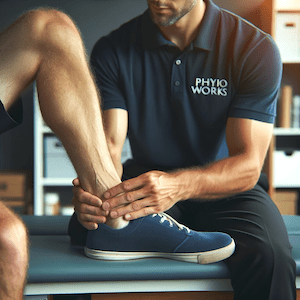

Sprained Ankles and Syndesmosis Injuries
Sprained ankles, including syndesmosis injuries, are among the most common issues we encounter. These injuries can range from mild ligament stretches to severe tears, impacting your mobility and quality of life. Understanding the specifics of each type is crucial for effective treatment and timely recovery.
Ankle Tendinopathies
Tendinopathies, such as those affecting the Achilles and tibialis posterior tendons, are common in active individuals. These conditions arise due to overuse or trauma, leading to pain and swelling in the affected area. Targeted physiotherapy can significantly aid in recovery and prevent future injuries.
Posterior Ankle Conditions
Conditions like posterior ankle impingement and retrocalcaneal bursitis can cause significant pain, especially during physical activities. Recognising these conditions early and starting appropriate treatment is vital for maintaining ankle health and functionality.
Ankle Arthritis
Arthritis in the ankle, often a result of wear and tear or injury, leads to joint pain and stiffness. Early intervention and proper management, including physiotherapy, are essential to slow its progression and manage symptoms effectively.
Biomechanical Conditions
Abnormal foot and ankle biomechanics can lead to various issues, from pain during weight-bearing to nerve compression. Understanding and treating these conditions are crucial for restoring normal function and preventing further complications.
Systemic Conditions That May Cause Ankle Pain
Systemic diseases such as rheumatoid arthritis can manifest as ankle pain. It's important to address these underlying conditions to effectively manage ankle symptoms.
Conclusion
Ankle pain can arise from a multitude of causes, each requiring a unique approach to treatment. If you're experiencing ankle discomfort, we recommend consulting a physiotherapist or doctor for a thorough evaluation. A personalised care plan can significantly improve your quality of life and mobility.
Related Articles
- Sprained Ankle Treatment & Recovery Guide - This article provides comprehensive information on managing pain and inflammation for a sprained ankle, including initial RICE steps and exercises for restoring mobility.
- Anterior Ankle Impingement: Causes, Treatments, Tips & Guide - Offers insights into the causes of anterior ankle impingement, its treatments, and practical tips for management.
- Posterior Ankle Impingement: Causes & Treatments - Explains the condition of posterior ankle impingement, its causes, and available treatment options.
- Tibialis Posterior Tendinopathy - Discusses the condition affecting the tibialis posterior tendon, symptoms, and implications for foot arch pain and ankle stability.
- Achilles Tendinopathy - Answers frequently asked questions about foot and ankle pain associated with Achilles tendinopathy and provides an overview of tendon injuries.
- How To Strap An Ankle - Guides on the correct techniques and types of tape for ankle strapping to prevent or manage ankle injuries.
Foot, Ankle & Heel Pain FAQs
Introduction
Welcome to PhysioWorks' comprehensive FAQ page on Foot, Ankle, and Heel Pain. Our expert physiotherapists are here to guide you in managing and overcoming discomfort. We’ve organised the FAQs into categories, each with a brief overview and links to in-depth articles, making navigation and understanding easier for you.
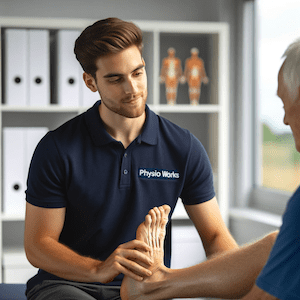

Foot Pain
Step into the various causes of foot pain and learn effective ways to relieve discomfort. Understand the impact of activities like barefoot running.
Ankle Injuries
Explore common ankle injuries and how to address them. From sprains to ligament damage, find out the best practices for care and prevention.
Heel Pain
Uncover the reasons behind heel pain and the effective treatments available. This section is particularly useful for understanding conditions like plantar fasciitis and heel spurs.
Achilles Pain
Find out how to manage and treat Achilles tendinopathy, a common concern for athletes and active individuals.
Shin Pain
Learn about shin splints, their causes, and how to alleviate this common issue, especially among runners.
Youth Injuries
Gain insights into youth leg injuries, including growing pains and heel issues in children.
Balance & Proprioception
Enhance your balance and proprioception with our professional advice and exercises.
Related Articles
- Sprained Ankle Treatment & Recovery Guide: Offers detailed advice on how to manage sprained ankles, including immediate recovery steps and physiotherapy treatments.
- Ankle Pain: Effective Management And Treatment Options: Discusses various conditions leading to ankle pain and outlines effective treatment strategies, highlighting the role of physiotherapy in pain reduction and mobility improvement.
- Plantar Fasciitis: Provides an overview of plantar fasciitis, including common causes, treatment options, and related conditions like peroneal tendinopathy and Achilles tendinopathy.
- Achilles Tendinopathy: Focuses on the causes of Achilles tendinopathy, its impact on heel pain, and a range of treatment and prevention strategies.
- Ankle Strapping: Complete Guide To Injury Prevention: Explains the benefits of ankle strapping as a preventative measure against injuries, with a focus on techniques and materials.
- Heel Pain: Explores various causes of heel pain, including tendon injuries, foot injuries, bone injuries, and systemic conditions, alongside recommended treatments.



